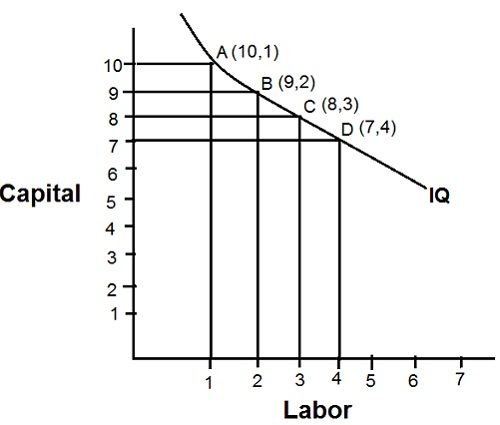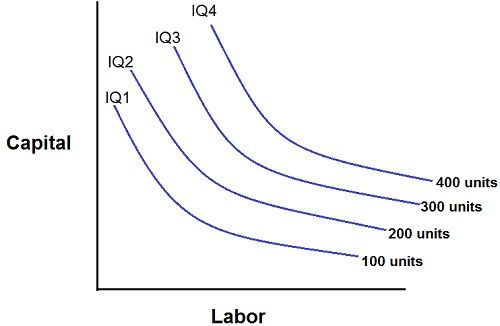Definition: An Iso-quant Curve shows all the possible combinations of input factors that yield the same quantity of production. In other words, an iso-quant curve is a geometric representation of the production function, wherein different combinations of labor and capital are employed to have the same level of output.
The iso-quant curve is also known as Iso-Product Curve. The term “Iso” means same and “quant” or “product” means quantity produced.
The slope of an iso-quant curve is called the rate of technical substitution, which means how much capital are to be substituted for the labor to give the same quantity of production if the labor is reduced by 1 unit. Thus, the input factors can be substituted for one another to have an unchanged level of output.
Assumptions of Iso-quant Curve
- Only two factors of production Viz. Labor and capital are taken into the consideration.
- These factors can be substituted for each other.
- The factors of production can be divided into small parts.
- It is assumed that technology remains constant.
- The shape of the Iso-quant depends on the level of substitutability between the factors of production.
The concept of Iso-quant can be further comprehended through an illustration below:
Suppose there are two input factors Viz. Labor and Capital. The different combinations of these factors are used to have the same level of output as shown in the schedule below:
| Combination | Labor (unit) | Capital (Unit) | Output (Number) |
|---|---|---|---|
| A | 1 | 10 | 100 |
| B | 2 | 9 | 100 |
| C | 3 | 8 | 100 |
| D | 4 | 7 | 100 |
Iso-quant Map: An iso-quant map shows the different iso-quant curves representing the different combinations of factors of production, yielding the different levels of output. Thus, higher the iso-quant curve, the higher is the level of output.



Heke Kayungilo says
Understandable note